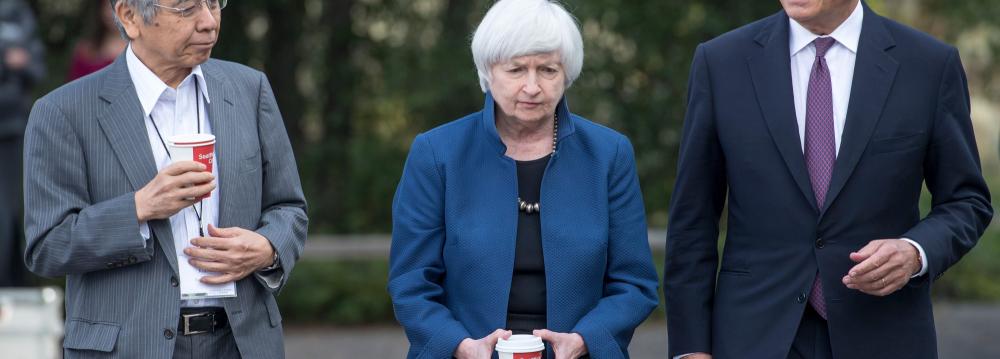The death of a major economic concept is riling many economists and analysts. Known as the Phillips Curve, a concept developed by New Zealand economist William Phillips, it shows that inflation and unemployment have a stable and inverse relationship and is a fundamental philosophy for many.
In recent months with central banks using artificial ways to pump money into the economy, this inverse relationship is seen to be dying, or rather "flattening" as many economists point out, CNBC reported.
Low wages and temporary jobs add pressure on workers. That in turn leads to less spending power in the economy even though the level of unemployment maybe falling. This is not great news for central bank policymakers across the world pumping artificial money into the system to bring the global economy back to its pre-2008 crisis days.
Ever since the global financial crisis, central banks have pegged their monetary policy on these two pillars–inflation and unemployment. While they have been successful in trying to bring the level of unemployment down, inflation hasn't edged up to the target many of the central banks had set earlier.
Inflation, Employment
Recent economic data across the US and Europe have shown that while unemployment seems to be cooling down, inflation is lagging gains. As a result, institutions like the European Central Bank have had to lower their inflation target recently.
The ECB, in its governing council meeting in July, discussed at length the disconnect between inflation and employment in the eurozone economy, attributing it to a number of structural factors such as changes in labor markets, work contracts and wage-setting processes.
But policymakers have still not been able to find a solution out of this deadlock. The answer lies not in lowering targets but slowly removing their foot off the accelerator. Perhaps it is time for central banks to gracefully exit the long and arduous process of quantitative easing before the scars it leaves behind are too tough to handle.
Alberto Gallo, head of macro strategies and manager of the Algebris Macro Credit Fund, told CNBC last month that central banks should look at removing artificial stimulus for three reasons–it is becoming less useful, has side-effects and to build an adequate policy buffer to deal with future risks.
Central banks, however, have always been very vague when communicating, especially when addressing questions like the dying Phillips Curve. One would expect that policymakers at the Jackson Hole Symposium in Wyoming last month exchanged notes in order to coordinate their timely exit. Seems, it is the waiting game all over again.
Traders Refocus on Central Banks
Investors will be looking to a full calendar of Fed speakers from Tuesday to shed light on the US policy outlook, while Mario Draghi may give more clarity on paring back the European Central Bank’s bond-buying program when he speaks after a rates decision on Thursday. Draghi will express concern over the euro’s strength, but won’t say much about his asset-purchase program’s future, according to a survey, Bloomberg reported.
Data on US durable-goods orders, the trade balance, and unemployment claims, as well as the release of the Fed’s Beige Book Wednesday, will add to the mix.
European stocks bounced after Monday’s losses as traders shifted focus from North Korea to a week packed with central banks' decisions, federal reserve speakers and economic data that will help illuminate the path of the global economy.
Most industry sectors in the Stoxx Europe 600 Index gained, with carmakers and miners leading the charge. S&P 500 futures declined before US markets reopen after the Labor Day holiday. The yen extended gains and treasuries climbed as unease over North Korean plans for a ballistic missile launch lingered, but government bonds across Europe fell and gold was steady as the risk-off trade eased. West Texas crude rose a third day and copper gained most among industrial metals.
Meanwhile, four central banks from high income countries will hold policy making meetings soon. They are the Reserve Bank of Australia, Sweden's Riksbank, the Bank of Canada and the European Central Bank. Investors focus on the latter two. To be sure, no one expects the ECB to change rates or policy.


